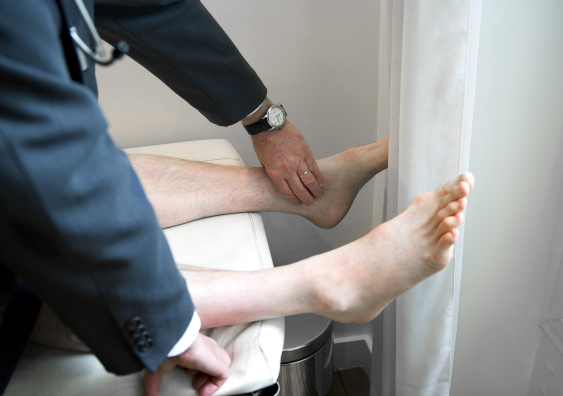2023-11-06 ニューサウスウェールズ大学(UNSW)

The Esprit BTK device could greatly improve treatment options for patients with blocked lower leg arteries. Photo: BSIP / Getty Images.
◆Esprit BTKは、下腿部動脈の閉塞症治療のために開発された機械的な支柱で、ポリL乳酸から作られており、18-24か月で体内で分解される特性を持っています。 Esprit BTKは、血管の収縮を防ぐ薬物でコーティングされており、血管を開いたままに保つ役割を果たします。 Esprit BTKは、血管を開いたままに保ち、足の切断を防ぐのに効果的であり、治療の新たな選択肢を提供します。
<関連情報>
- https://newsroom.unsw.edu.au/news/health/dissolvable-stent-effective-lower-leg-artery-disease-treatment-clinical-trial
- https://www.nejm.org/doi/full/10.1056/NEJMoa2305637
薬剤溶出性再吸収性足場と膝窩下動脈疾患に対する血管形成術の比較 Drug-Eluting Resorbable Scaffold versus Angioplasty for Infrapopliteal Artery Disease
Ramon L. Varcoe,Brian G. DeRubertis, Raghu Kolluri,Prakash Krishnan,David C. Metzger,Marc P. Bonaca, Mehdi H. Shishehbor, Andrew H. Holden,Danielle R. Bajakian, Lawrence A. Garcia, Steven W.C. Kum, John Rundback, Ehrin Armstrong, Jen-Kuang Lee,Yazan Khatib, Ido Weinberg, Hector M. Garcia-Garcia, Karine Ruster, Ph.D.,Nutte T. Teraphongphom, Yan Zheng, Jin Wang, Jennifer M. Jones-McMeans,and Sahil A. Parikh,for the LIFE-BTK Investigators
New England Journal of Medicine Published:October 25, 2023
DOI: 10.1056/NEJMoa2305637
Abstract
BACKGROUND
Among patients with chronic limb-threatening ischemia (CLTI) and infrapopliteal artery disease, angioplasty has been associated with frequent reintervention and adverse limb outcomes from restenosis. The effect of the use of drug-eluting resorbable scaffolds on these outcomes remains unknown.
METHODS
In this multicenter, randomized, controlled trial, 261 patients with CLTI and infrapopliteal artery disease were randomly assigned in a 2:1 ratio to receive treatment with an everolimus-eluting resorbable scaffold or angioplasty. The primary efficacy end point was freedom from the following events at 1 year: amputation above the ankle of the target limb, occlusion of the target vessel, clinically driven revascularization of the target lesion, and binary restenosis of the target lesion. The primary safety end point was freedom from major adverse limb events at 6 months and from perioperative death.
RESULTS
The primary efficacy end point was observed (i.e., no events occurred) in 135 of 173 patients in the scaffold group and 48 of 88 patients in the angioplasty group (Kaplan–Meier estimate, 74% vs. 44%; absolute difference, 30 percentage points; 95% confidence interval [CI], 15 to 46; one-sided P<0.001 for superiority). The primary safety end point was observed in 165 of 170 patients in the scaffold group and 90 of 90 patients in the angioplasty group (absolute difference, -3 percentage points; 95% CI, -6 to 0; one-sided P<0.001 for noninferiority). Serious adverse events related to the index procedure occurred in 2% of the patients in the scaffold group and 3% of those in the angioplasty group.
CONCLUSIONS
Among patients with CLTI due to infrapopliteal artery disease, the use of an everolimus-eluting resorbable scaffold was superior to angioplasty with respect to the primary efficacy end point. (Funded by Abbott; LIFE-BTK ClinicalTrials.gov number, NCT04227899. opens in new tab.)


